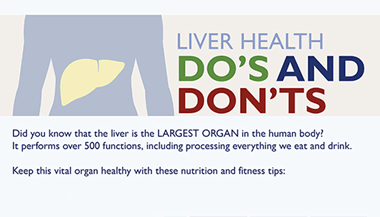Insulinoma
What is an insulinoma?
The pancreas makes insulin, which helps keep your blood sugar level balanced. Tumors on your pancreas, called insulinomas, make extra insulin -- more than your body can use. This causes blood sugar levels to drop too low. These tumors are rare and usually do not spread to other parts of your body.
What causes an insulinoma?
The cause of insulinomas is unknown.
What are the risk factors for an insulinoma?
There are few risk factors for insulinomas. But, women seem to be affected more often than men. Most often, the tumors appear in people between the ages of 40 and 60. Some genetic diseases can raise your chance of getting an insulinoma. They are:
- Multiple endocrine neoplasia type 1, abnormal tissue growth in the endocrine system
- Von Hippel-Lindau syndrome, an inherited disease that causes tumors and cysts throughout your body
- Other genetic syndromes, such as neurofibromatosis type 1 and tuberous sclerosis
What are the symptoms of an insulinoma?
Insulinomas can cause these symptoms:
- Confusion
- Sweating
- Weakness
- Rapid heartbeat
If your blood sugar gets too low, you can pass out and even go into a coma.
How are insulinomas diagnosed?
Insulinomas can be difficult to diagnose. The average time between the start of symptoms and a diagnosis is about 3 years.
If your healthcare provider suspects an insulinoma, you may stay in the hospital for a few days. This is so your doctor can watch your blood sugar and other substances in your blood while you fast. You will not be able to eat or drink anything except water during this time. If you have an insulinoma, you will probably have very low blood sugar levels within 48 hours of starting this test. If your symptoms of low blood sugar have been after meals, you may also have a test of your blood sugar and insulin for several hours after a meal.
Your healthcare provider may also use imaging tests. These can help find out how big your tumor is and where it's located. A transabdominal ultrasound study is usually the first test done. Other tests include endoscopic ultrasound, CT (computed tomography) scan or MRI (magnetic resonance imaging).
If the insulinoma is too small to be seen with these imaging tests, you may need tests which sample blood from multiple areas of your pancreas to detect where the extra insulin is being release into your blood stream.
How are insulinomas treated?
Most insulinomas are not cancerous. Surgeons can usually remove them and resolve the condition. Sometimes this can be done using a laparoscope. In laparoscopy, the surgeon makes small incisions and uses specialized instruments to remove the tumor.
If your healthcare provider thinks that surgery would not be a good option for you, non-surgical options are available. These would address the symptoms of hypoglycemia, such as eating small, frequent meals and taking some medicines to counteract the effects of the excess insulin.
While you are waiting for your surgery, you may stay in the hospital and get intravenous (IV) solutions to keep you from becoming hypoglycemic.
What are the complications of an insulinoma?
After surgery to remove an insulinoma, some people develop a pancreatic fistula. This causes pancreatic fluid to leak. You may be given medicine and extra fluids to help your fistula heal. Most close without the need for more surgery.
Can insulinomas be prevented?
There are no known ways to prevent insulinomas. Consider being checked for an insulinoma if any of your family members have any of the genetic conditions that increase risk.
Living with insulinomas
The majority of insulinomas are not cancerous, and removing the tumor(s) addresses the condition. Usually, symptoms don't recur. You are unlikely to get diabetes unless your surgeon has to remove a large part of your pancreas.
A small number of insulinomas are cancerous. Your surgeon may not be able to remove them entirely. If this happens, you may need to take medicine to stave off hypoglycemia. You may also need chemotherapy to help control the size of your tumors.
When should I call my healthcare provider?
If you have an insulinoma, you may have symptoms of low blood sugar. These include sweating, confusion, and double vision. You may notice these symptoms more when you’re hungry or after exercise. If you have these symptoms several times in one week, consult your healthcare provider right away.
Key points
- Insulinomas are tumors in your pancreas. They make extra insulin, more than your body can use.
- Insulinomas can cause hypoglycemia, or low blood sugar.
- Low blood sugar can cause confusion, sweating, weakness, and a rapid heartbeat. If your blood sugar gets too low, you can pass out and even go into a coma.
- Almost all insulinomas are not cancerous.
- Removing the tumor addresses the condition.
Next steps
Tips to help you get the most from a visit to your healthcare provider:
- Before your visit, write down questions you want answered.
- Bring someone with you to help you ask questions and remember what your provider tells you.
- At the visit, write down the names of new medicines, treatments, or tests, and any new instructions your provider gives you.
- If you have a follow-up appointment, write down the date, time, and purpose for that visit.
- Know how you can contact your provider if you have questions.




